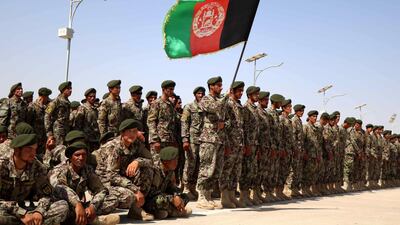In recent months, the size of Afghanistan’s National Defence force has been dramatically reduced.
But far from being the result of the security situation or possible peace talks with the insurgent Taliban, it is a bid by the government and the United States to stamp out “ghost” soldiers – men whose names appear only on paper.
The Special Inspector General for Afghanistan Reconstruction reported that the size of the Afghan military was down by nearly 10 per cent in the last three months of the previous period.
The names of around 42,000 fewer soldiers appeared on the books between April and June this year compared to the same period last year.
The special inspector said that the reduction was because of a change in accounting from the number reported as being on-hand by officials in the field to the number of biometrically validated forces.
"The change was part of an effort by the United States and its partners to reduce opportunities for corrupt [Afghan military] officials to report 'ghost' (nonexistent) soldiers and police on personnel rolls in order to pocket the salaries," the report said.
With a potential US drawdown looming, recent Taliban attacks in Afghanistan have underscored pressure on Afghanistan’s overstretched security forces.
Washington is attempting to clinch a framework peace agreement with the Taliban to end America’s longest and most expensive war. One expected aspect of the agreement is a timeline for withdrawing many or all of the 14,000 troops the US has in Afghanistan.
Around 9,000 of those forces are involved in training, advising and assisting Afghan security forces. US officials have long expressed concerns about the strength and capability of the Afghan forces, especially without adequate international support.
Since the beginning of the reconstruction, America has attempted to build the capacity of the government and security so that it can operate alone. US planners fear a repeat of the Soviet withdrawal from Afghanistan in 1989 where the Moscow backed government, unable to keep back the Mujahedeen forces, collapsed within three years.

